17 beautiful yet practical pantry ideas to inspire you to add one to your kitchen
Fast becoming a must-have feature in our homes, these pantry ideas and key design rules ensure a chic design that becomes the perfect support for your kitchen
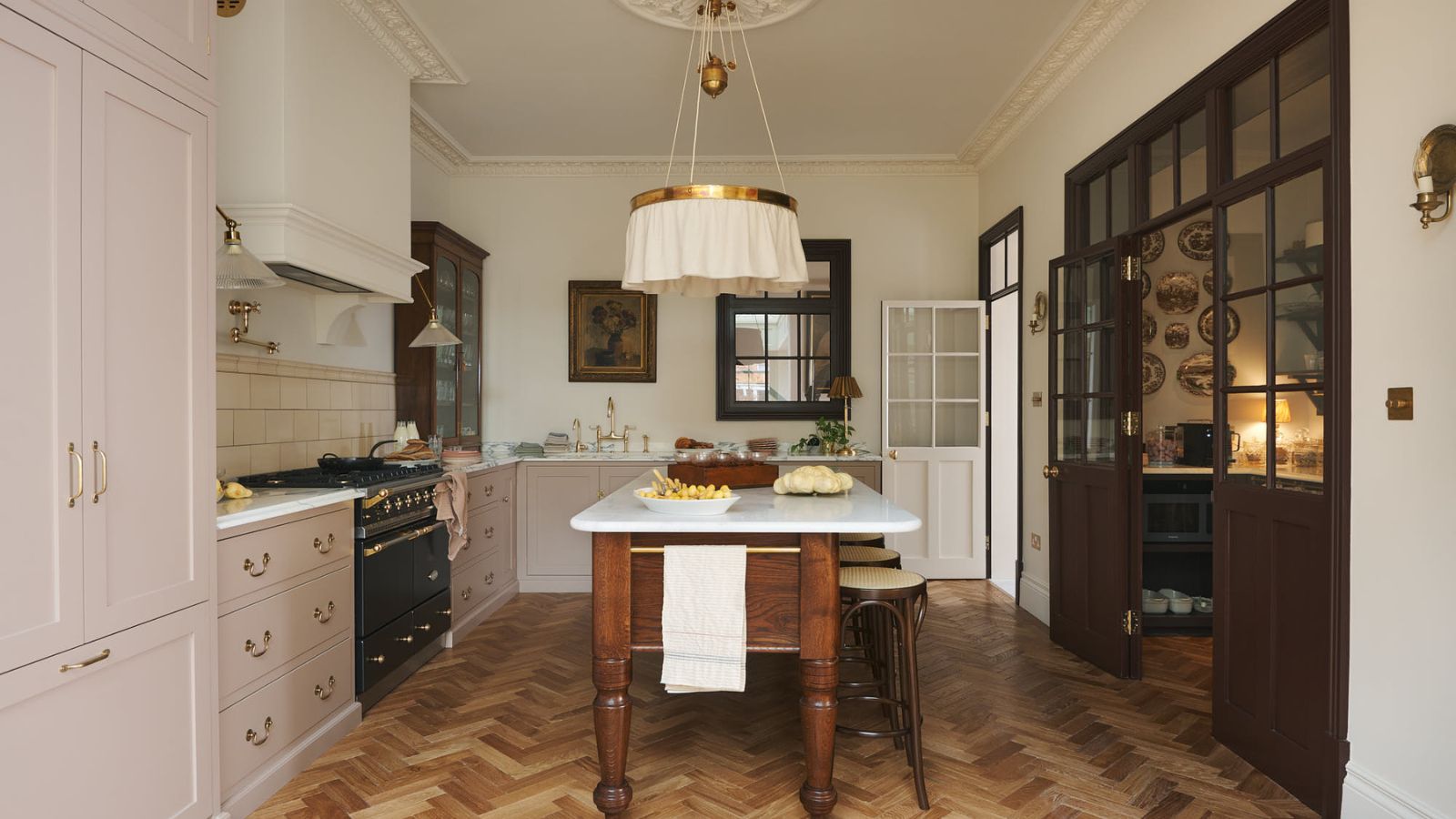
- 1. Create cohesion between your pantry and kitchen design
- 2. Plan out the pantry storage based on your specific needs
- 3. Maximize storage by utilizing the pantry door
- 4. Decant your pantry staples into more aesthetic canisters
- 5. Add a ladder to your pantry to reach tall shelves
- 6. Install your pantry into an awkward corner or alcove
- 7. Divide a pantry from your kitchen with glazed doors
- 8. Consider a double pantry in a busy, family household
- 9. Create a farmhouse feel with a freestanding pantry
- 10. Choose a sliding solution
- 11. Embrace luxurious design with a marble pantry
- 12. Use a pantry to add a pop of color to a kitchen
- 13. Add plenty of decor to personalize your pantry
- 14. Surprise with a rich wood interior
- 15. Add a playful touch with patterned tiles
- 16. Be playful with the details in a pantry
- 17. Ensure your pantry is well-ventilated
- Do you need a pantry?
- What's the difference between a larder and a pantry?
- What is the difference between a pantry and a butler's pantry?

Pantry ideas are often found right at the top of kitchen wish lists. Planned well, a pantry can become not simply a place to tuck away excess food and utensils, but an Aladdin's cave of beautifully presented produce which provides a calming moment of reprieve from a bustling family kitchen.
From cabinets devoted to staples to walk-in storage, pantries aren't just limited to larger homes – even smaller kitchens can usefully incorporate them into their floorplan, though organizing a pantry intricately is more important when they are smaller.
Pantries have become more popular than ever recently, as we embrace more eco-friendly lifestyles. From walk-in spaces to characterful cabinet designs, these designer-approved pantry ideas and key pantry design rules will help you to create a space in your kitchen design that balances style and function.
17 pantry ideas that maximize style and organization
Whether you've got a pantry that needs a refresh, or are considering adding one to your list of kitchen ideas, we've got all the pantry ideas you need to work out what's best for your space, how to get the most out of the pantry, and how to make kitchen storage look the best it possibly can.
1. Create cohesion between your pantry and kitchen design
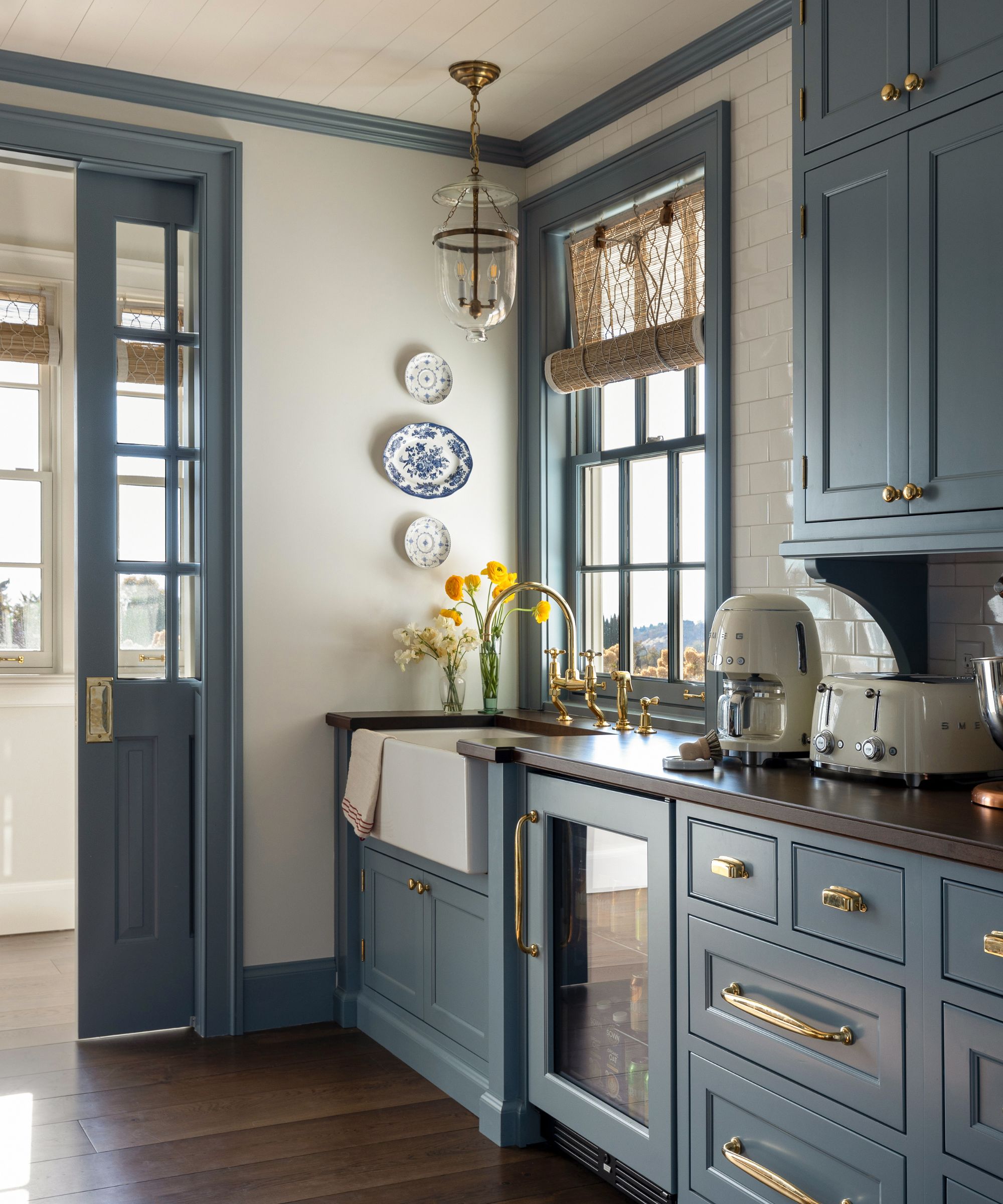
Walk-in pantries often act as an extension of the kitchen, adding not only extra storage, but sometimes even a wine fridge and an additional sink. So, designing it to feel as elevated and timeless as your kitchen is a must, especially if the two spaces connect.
This Utah home's pantry is a chic example of how to get it right. A simple yet classic color palette of blue and white gives the space a quiet elegance, while the brass hardware and dark countertops add depth and contrast.
The right colors and finishes are the easiest way to make your pantry look more expensive and elevated without taking the shine from your main kitchen. It's about complementing rather than competing..
Design expertise in your inbox – from inspiring decorating ideas and beautiful celebrity homes to practical gardening advice and shopping round-ups.
2. Plan out the pantry storage based on your specific needs

If you want to relieve the kitchen of on-show pantry storage ideas, you can equip your pantry as if it were an overflow kitchen. This means considering right down to the minutiae what exactly will be useful to have in there, other than just shelving, cabinetry, or drawers.
'When designing a pantry, I focus on my clients’ lifestyles and needs, ensuring every item has a dedicated place, as well as space to grow for new small appliances and essentials over time,' says Lauren Carranza, of Seasons for Design, who suggests making space in your pantry for less aesthetic items like bulky equipment and lesser-used pots and pans.
Think about what you want to store in your pantry that you might not have room for in your kitchen. For example, in this pantry designed by Roundhouse, wine storage is important to the owners and has been allocated both cubbies and a wine fridge; there's a breakfast bar and space for cake-making, too – all of which allows the kitchen beyond to be much clearer of clutter.
3. Maximize storage by utilizing the pantry door
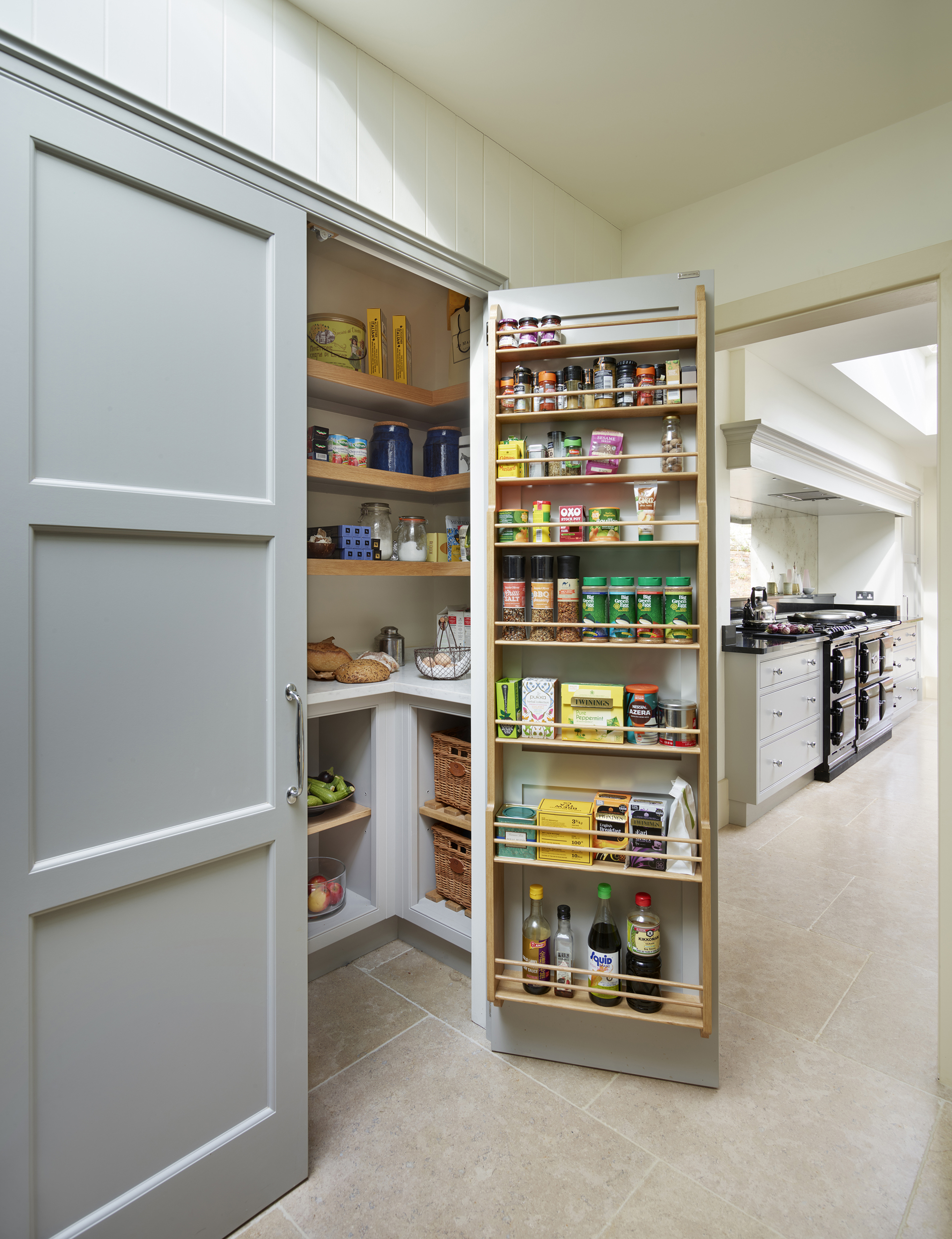
Most pantry ideas require clever ways to boost storage. This is where space-enhancing pantry door ideas can really come into their own, making room for otherwise awkward-to-display items, such as spices – best stored in alphabetical order for ease of access – and taller bottles that don't fit conventional shelving heights.
The weight burden on the door will soon add up, so you will need to invest in a quality install for the door – industrial-strength hinges and perhaps even a wheel at the base of the door will be a must. Making use of specially-designed pantry organizers might be your best bet to help maximize the space that you are working with.
Whether there's a distinct lack of shelves in your pantry, or perhaps you'd like to separate your spices from your dried fruits and nuts? Use an organizer to keep this space tidy, use every inch of space, and make meals a little less chaotic.
4. Decant your pantry staples into more aesthetic canisters
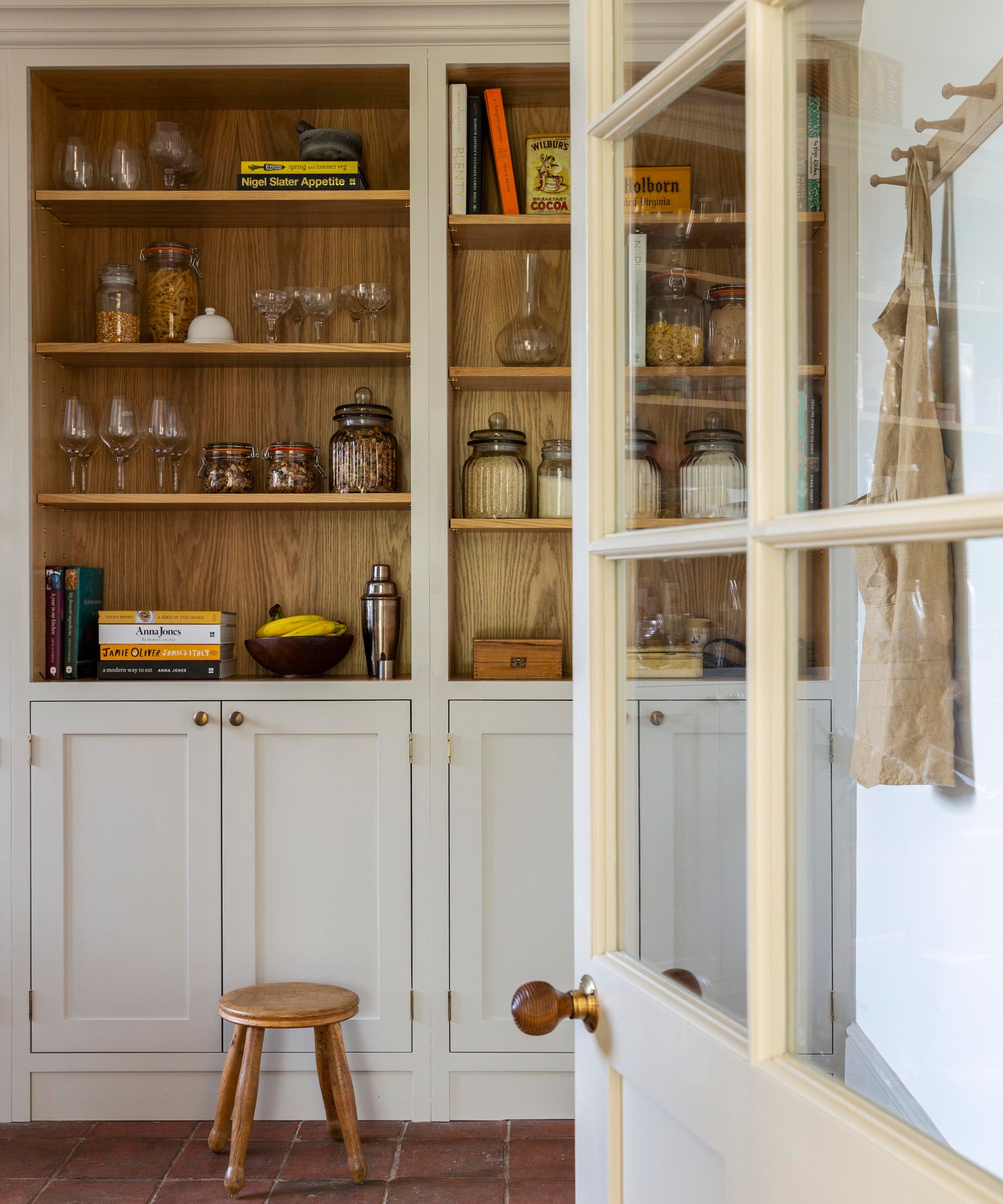
If there's one thing all of the pantry inspiration you have pinned on Pinterest probably have in common, it's that all of the unsightly packaging has been replaced by pretty canisters and a uniform look.
In this pantry designed by Lauren Gilberthorpe Interiors, the wooden open shelving has been given a cleaner, more curated look with glass canisters holding dried goods, styled with glassware, and a range of recipe books.
And while it's an aesthetic choice, it's also a practical one, too. Not only does this approach allow you to fit more into your pantry, but it also keeps the whole space more organized.
5. Add a ladder to your pantry to reach tall shelves

In a small pantry, utilizing vertical space is a must. But reaching tall shelves can be an issue – which is where a classic wooden ladder on a rail comes in. It's not just a functional addition, either. A ladder adds a traditional look and can give your pantry a bit more character.
You can also be strategic about what items you store at different heights, so you aren't constantly climbing up and down. Lower shelves can be dedicated to ingredients that you use every day, while the upper levels can be used to store crockery, cookbooks and items used only a few times a year.
Right at the top, neatly packed boxes of seasonal decor, crockery, and ingredients can be tucked away until they're needed.
6. Install your pantry into an awkward corner or alcove
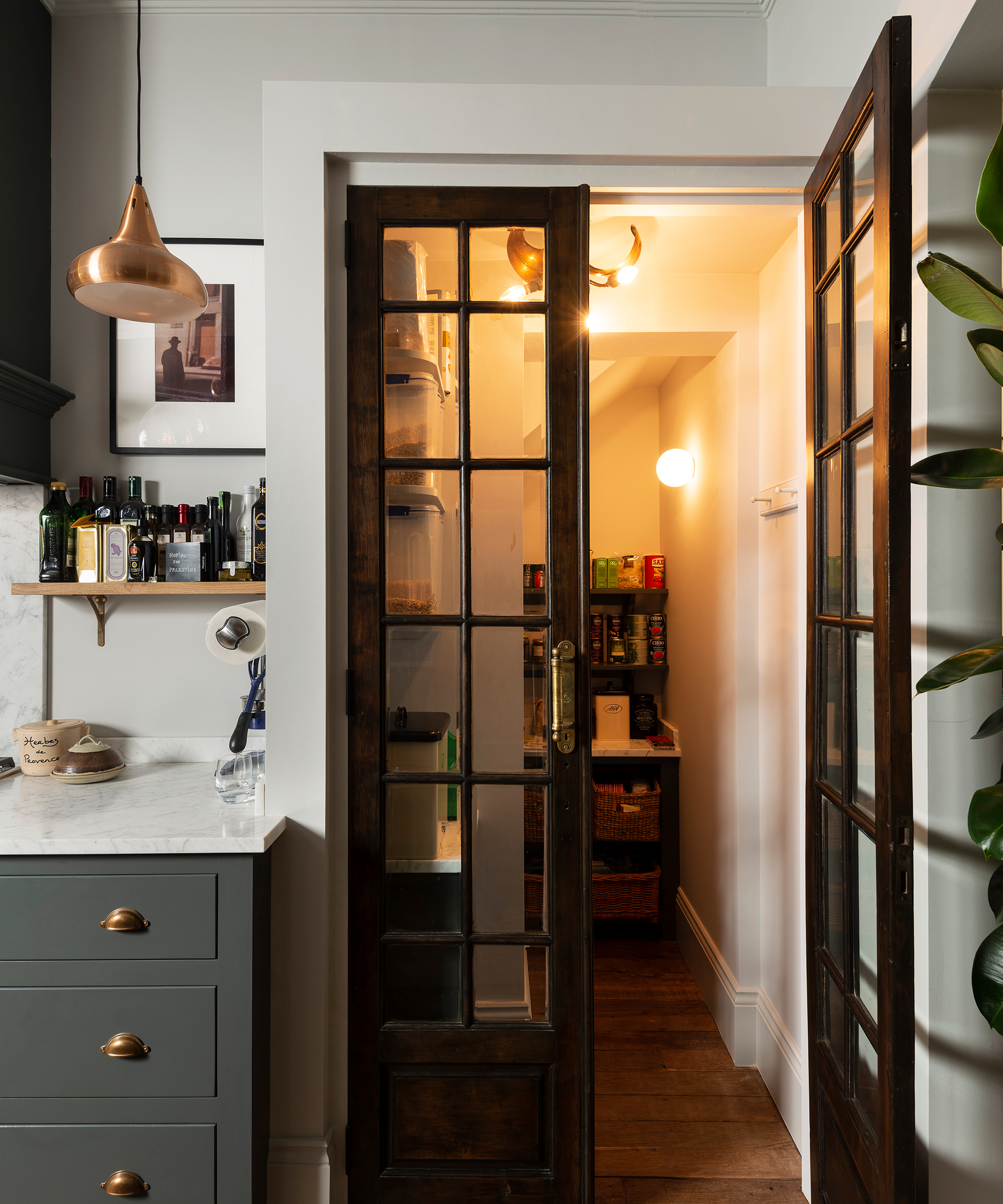
It's only natural to be concerned that a large pantry might be a waste of space. But remember that pantries don't by any means need to be large – for example, a narrow box room with no natural light can be transformed into an ideal place to store food.
Whether it's an awkward corner at the edge of your kitchen or a deep alcove you're not sure what to do with, if you comfortably can fit a pantry, it really can be the dream scenario for an uncluttered scheme.
Helen Parker, creative director of deVOL, also notes that 'Some people desire the uncluttered look that a pantry can build so much that they will create their own by sectioning off a small part of their kitchen and incorporating it into the final look of the room with beautiful joinery and metalwork.'
7. Divide a pantry from your kitchen with glazed doors
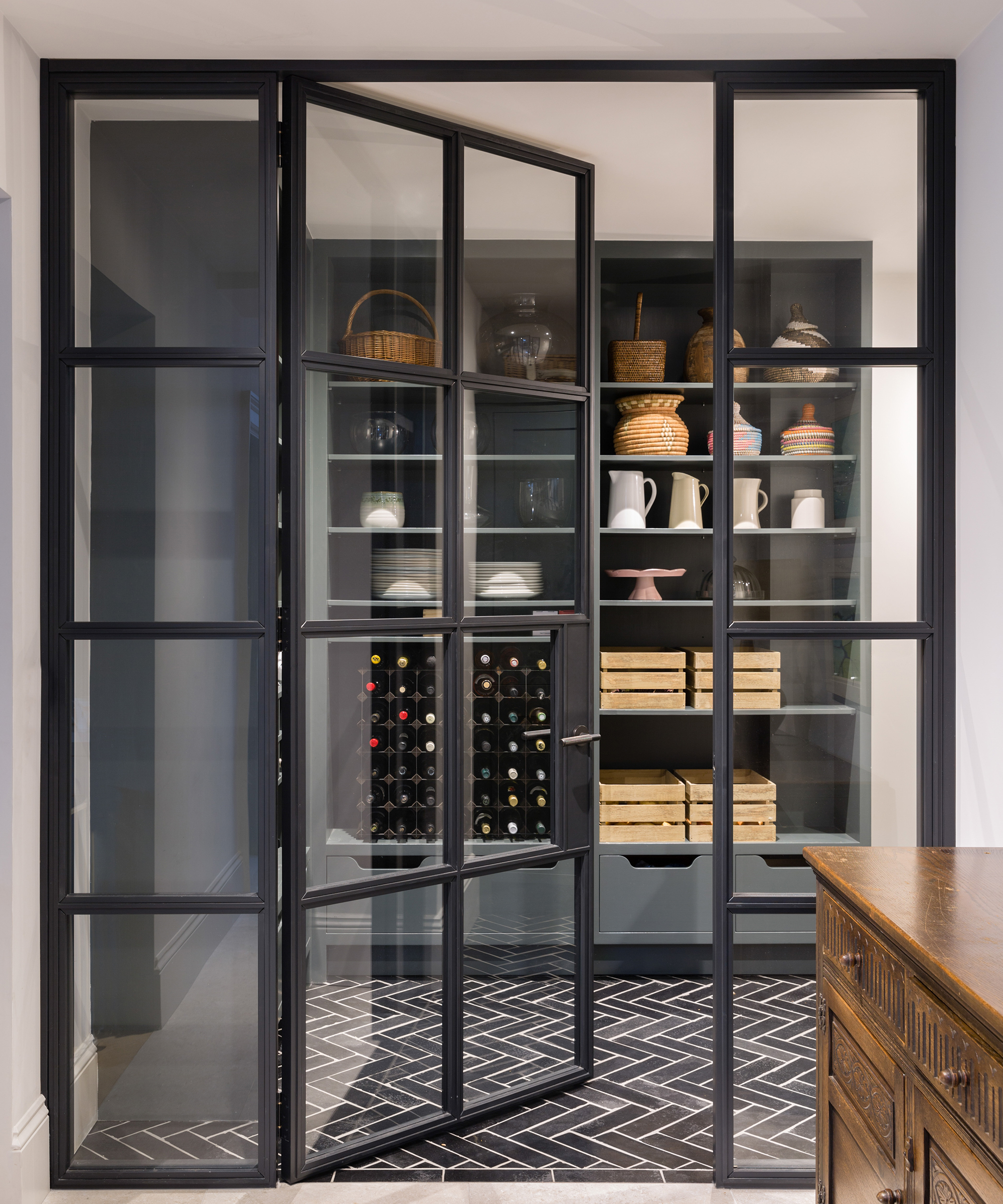
A pantry with glass doors makes it a design feature in its own right. It's also a chic choice if you need to divide a pantry and kitchen – it allows plenty of natural light into the pantry while still creating zones.
'A pantry door can serve as a visual and audible barrier for your secondary storage area, particularly if it houses your dishwasher. We have had a lot of requests from clients for glazed pantry doors to make space feel as though it isn’t entirely separate from the kitchen,' says Jennifer Jarvis, senior designer at Helen Green Design.
‘Architectural framed glass draws attention to the interior, creating a feature that’s as valuable aesthetically as it is practical,' she adds. This design demonstrates how this look can work in a modern pantry; however, it can also be achieved in a more traditional space paired with wood rather than steel.
8. Consider a double pantry in a busy, family household
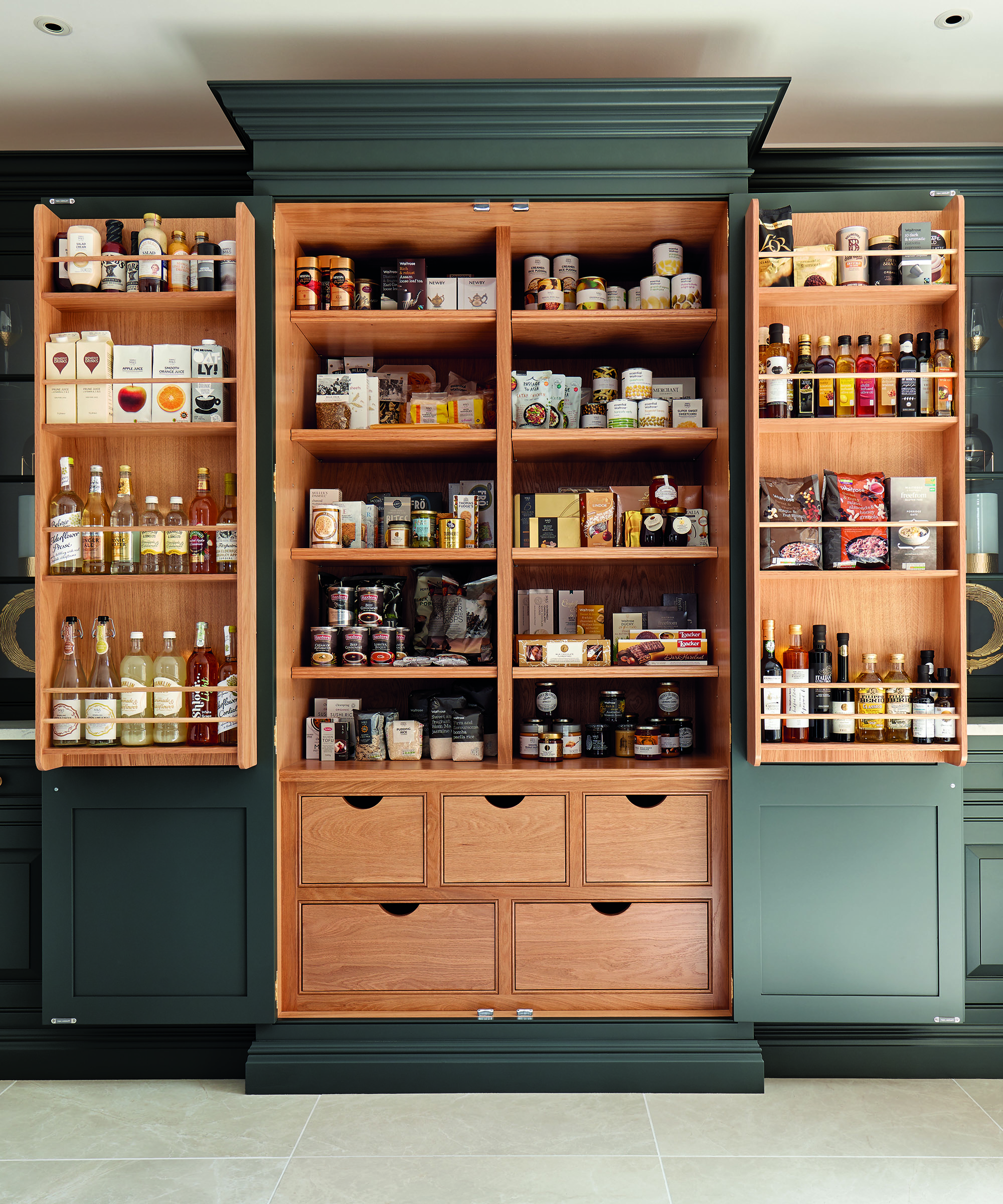
Be ready to go custom-made with a double pantry. If you don’t have space for a walk-in pantry, a bespoke cupboard is the next best thing to give you as much space as possible for food storage.
‘Double pantries give you the flexibility of choosing storage ideas and options that work for you, whether that might involve more drawers, an emphasis on shelving, or multiple spice racks, all orderly contained behind beautiful cabinetry,’ says kitchen designer Tom Howley.
Do supply exact dimensions of frequently bought food packaging – a bespoke maker can tailor shelves to match, which also ensures your double pantry is designed with enough space.
9. Create a farmhouse feel with a freestanding pantry
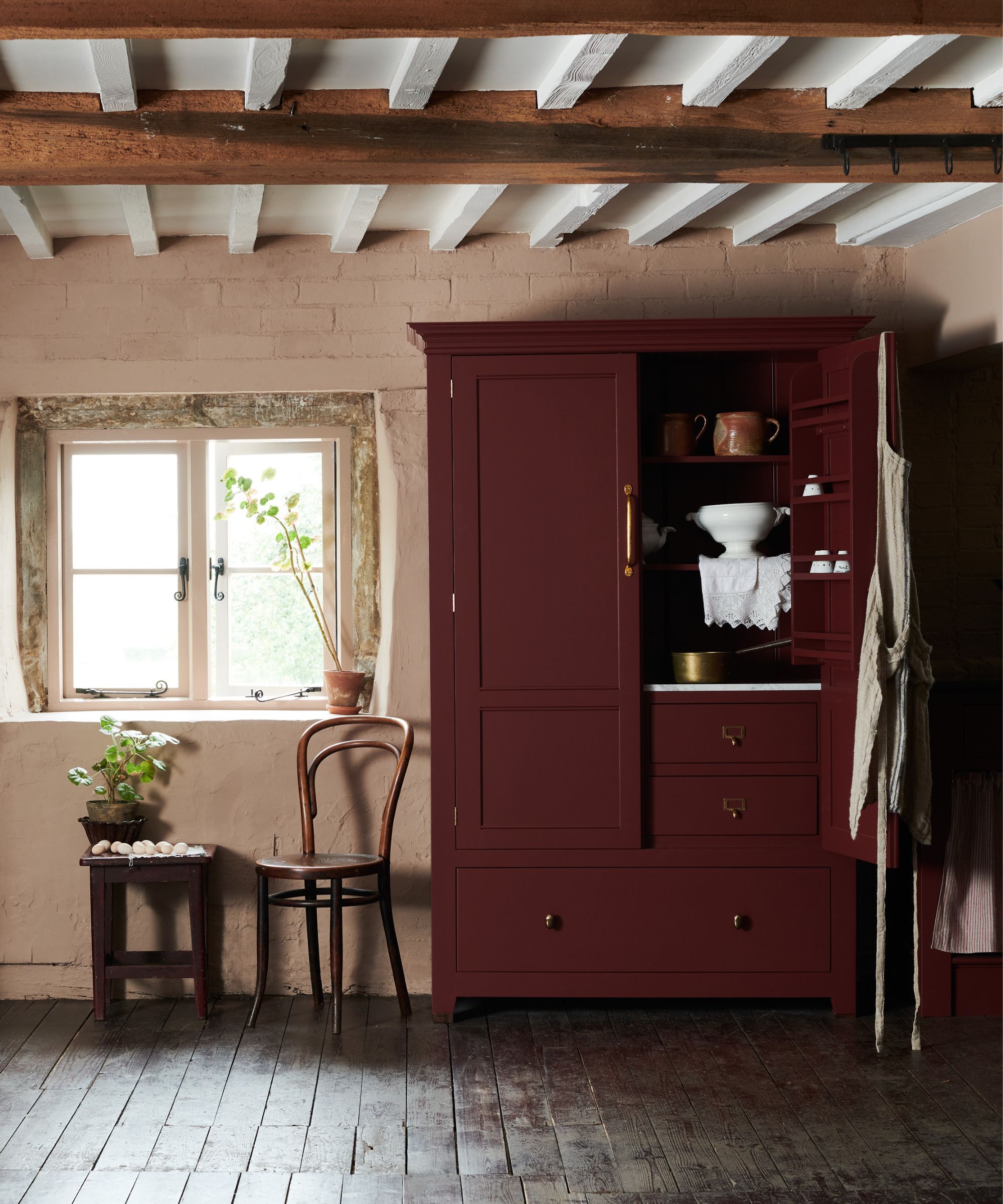
Farmhouse kitchens – or freestanding kitchens – are the perfect place for an in-kitchen pantry, since you can easily house a vast amount of storage in a freestanding unit. 'A freestanding pantry adds character, softening the uniformity of fitted cabinetry,' says Fred Horlock, design director at Neptune.
'It breaks up rigid lines and creates visual interest, resulting in a kitchen that feels inviting and sophisticated. It also contributes to functionality, providing your kitchen with additional storage or workspace, making it a practical and versatile choice.'
For most people, a freestanding pantry integrated into the kitchen makes the most sense – functionally and stylistically – so choosing a timeless design that feels cohesive to your kitchen scheme is a must.
10. Choose a sliding solution
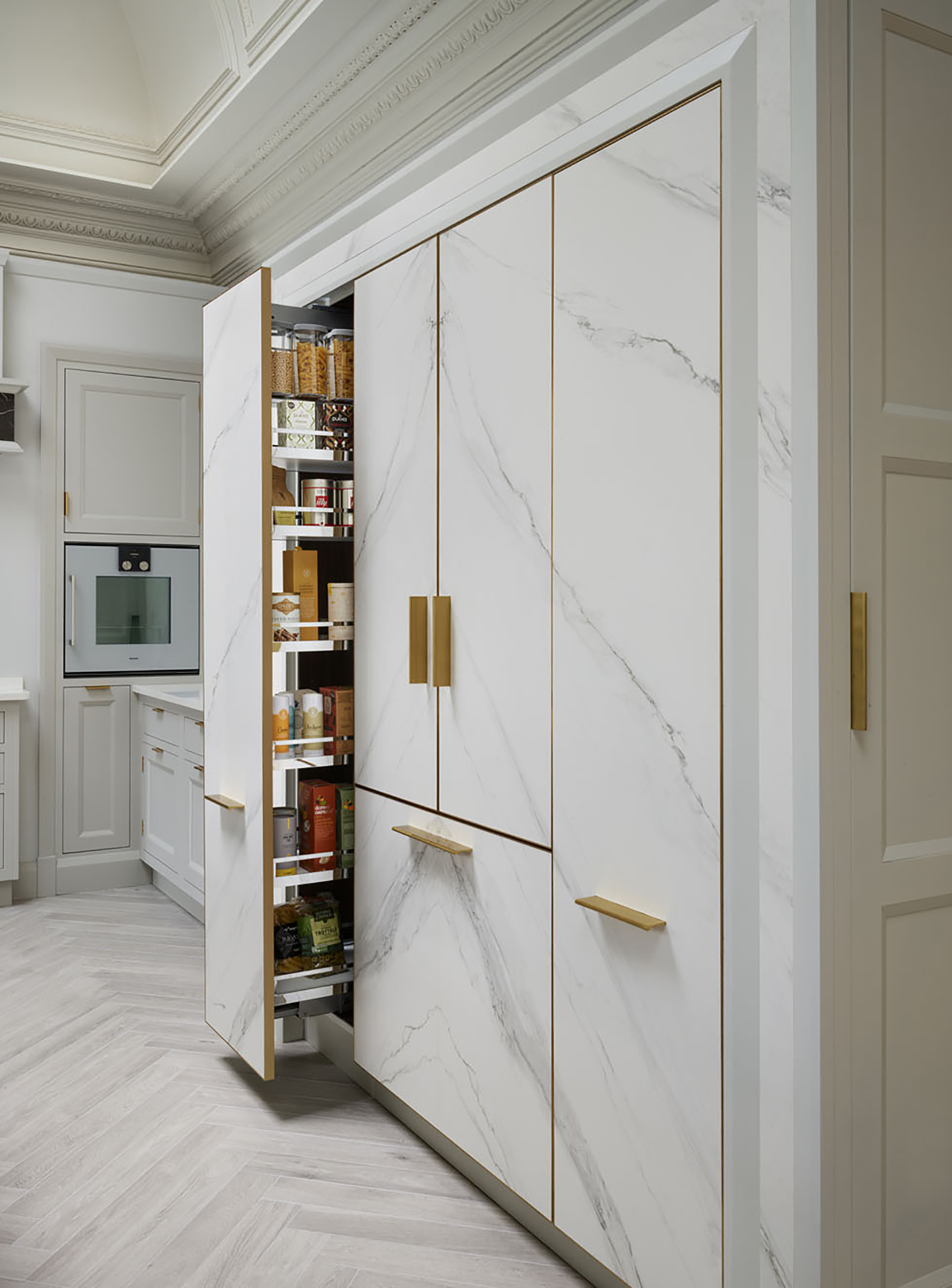
If you don’t have space for a walk-in larder, consider incorporating a sliding storage door into your design. The benefit of this solution is that all your store cupboard items can be viewed easily, rather than in a standard cupboard where items can easily get pushed to the back and forgotten about.
11. Embrace luxurious design with a marble pantry
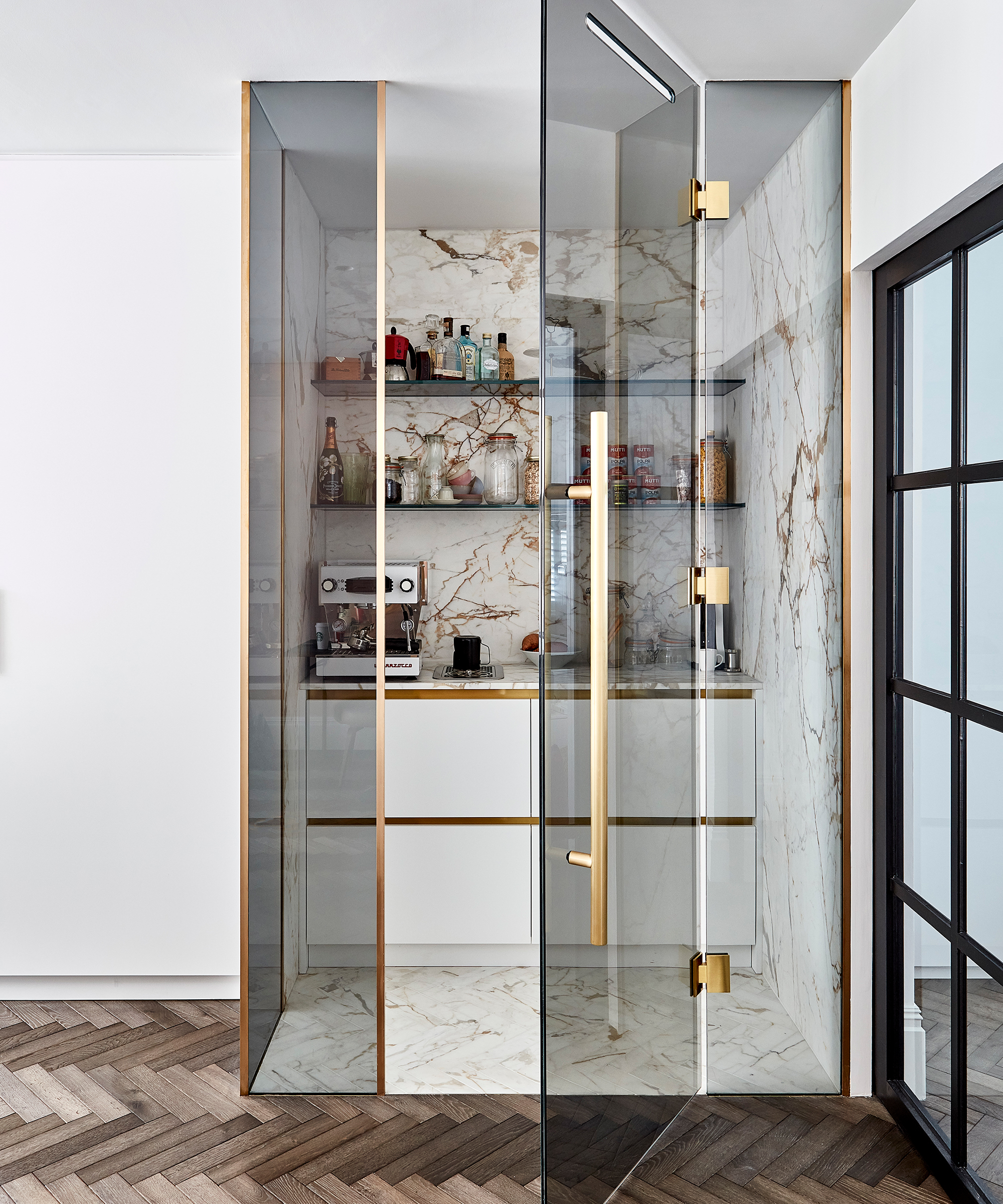
If your pantry is in plain view, why not embrace a more luxurious design? In the same way that marble kitchens feel elevated and timeless, it's a material that has the same impact on your pantry, too.
This pantry is a perfect example – framed by glass walls and doors, it's in full view from multiple areas of the room. So, lining the walls and floors in marble creates a chic focal point and makes the pantry feel like anything but a utilitarian space. The gold accents around the door and cabinet edges add a glamorous finish, too.
12. Use a pantry to add a pop of color to a kitchen
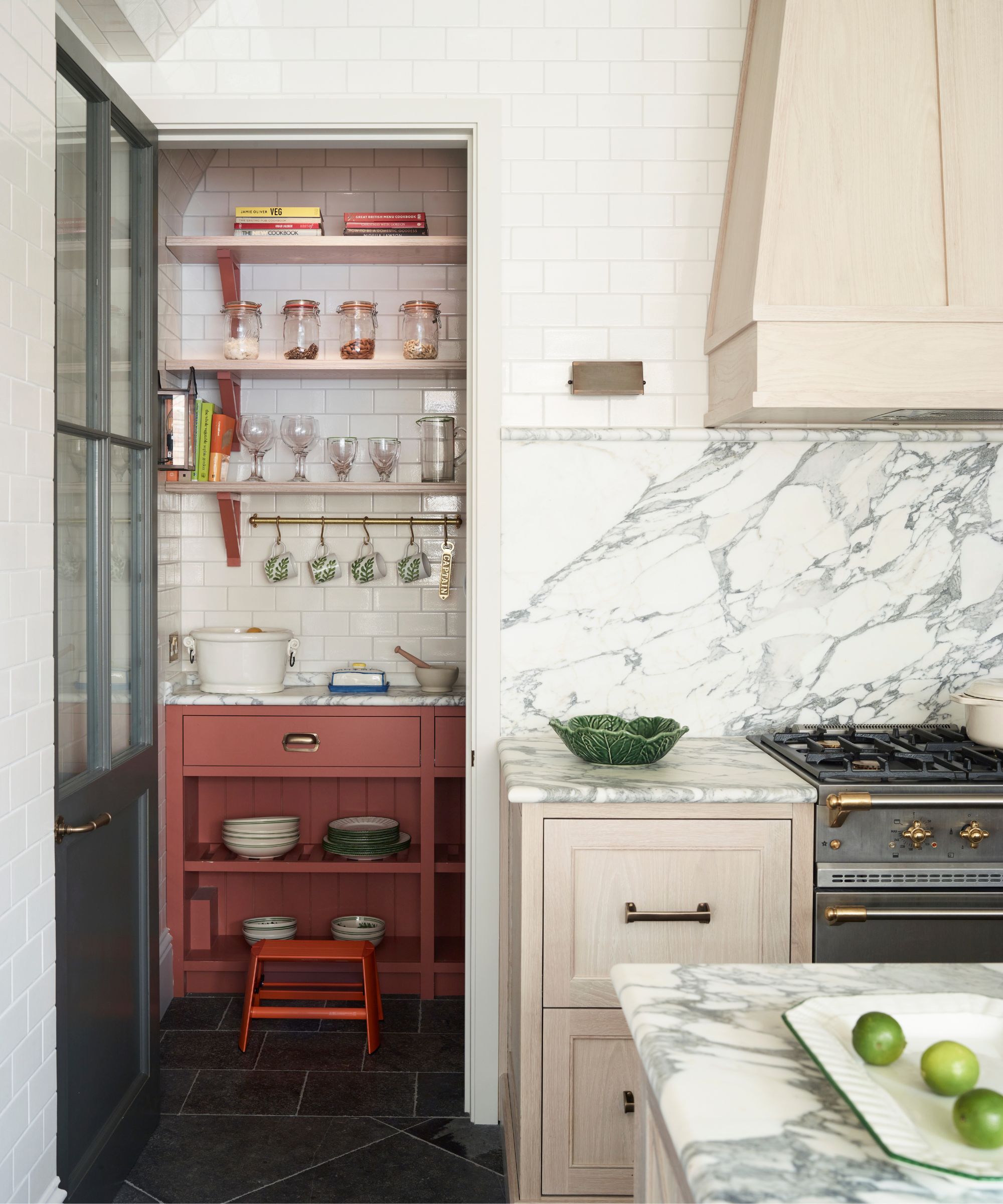
While neutral kitchens are often preferred for their enduring appeal, your pantry offers the perfect opportunity to play with bolder hues. Colorful pantries are having a moment thanks to their ability to add a more personality-filled feature.
The pink pantry cabinets here are a clear contrast to the beige ones in the kitchen, but the small preview into the more vibrant space feels curated and playful. The brass hardware and marble countertops tie it into the main kitchen while retaining its own sense of identity. It proves these smaller spaces are the perfect place to experiment with bolder designs.
13. Add plenty of decor to personalize your pantry

A pantry doesn't have to be designed with streamlined cabinetry, practical but personality-free flooring, and no decorative elements at all. If your home is beautifully decorated, it follows that you will want your pantry ideas to reflect the rest of your rooms.
In this pantry (which has been designed to look like anything but a utilitarian space), decor has given the whole scheme a more homey appeal. Artwork on the wall, a vase filled with seasonal blooms on the counter, and a large vintage rug add character to the room without impeding on function.
14. Surprise with a rich wood interior
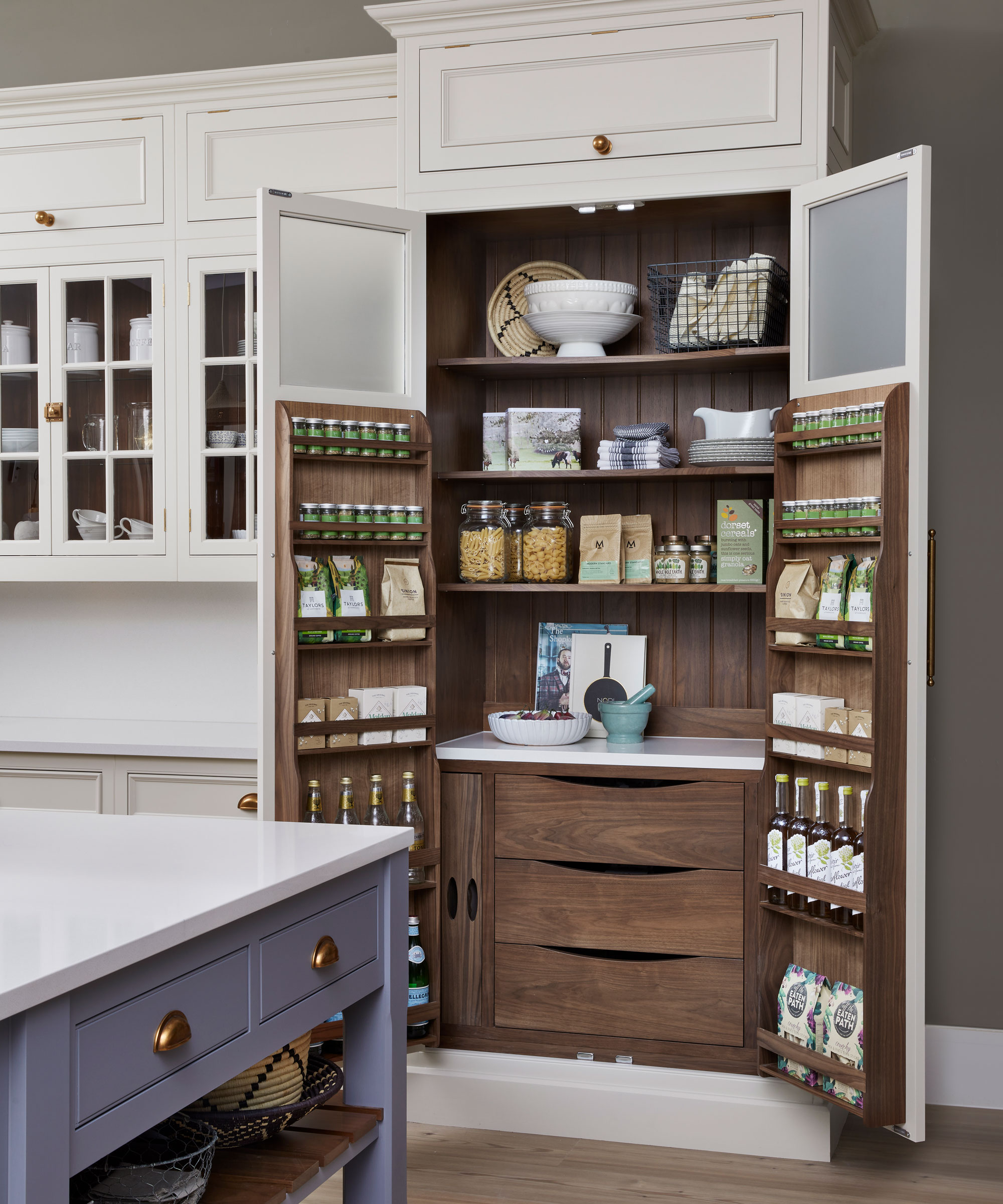
Incorporated at the end of a run of cabinetry, this pantry is a triumph of both form and function. It opens to reveal a host of built-in features – pull-out trays, spice racks, and a counter for small appliances. But it's that stunning, rich wood interior that steals the show, and ensures the piece looks as good open as it does when closed.
A bespoke, hand-built-to-order larder allows for any individual storage requirements to be met. Meaning that any space and style of home – period or contemporary, rural or urban – can be catered for, both realising aesthetic dreams and ensuring everything has its place, including enough smart storage space..
'A successful pantry is all about optimized storage, and luxury is created through a well-thought-out use of space. We always recommend using layered pull-out drawers that enable the use of the whole drawer depth whilst maintaining easy access to items within,' Lena Cottray, senior designer at Rigby&Rigby.
'This is particularly important in optimizing smaller spaces. Vertical pull-outs are also a good way of utilizing leftover spaces in a cabinetry run. Make sure the shelving you install is adjustable and consider the integration of an interchangeable labeling system for optimum organization,' she adds.
15. Add a playful touch with patterned tiles

Much like powder rooms, pantries can be a fun place to experiment with bold colors and patterns. You might want to keep your kitchen very classic and timeless, but the pantry isn't always on display, so get creative with your choices.
Patterned tiles that you love but are perhaps wary of using for your kitchen backsplash could find a home in this smaller space. Plus, you'll often find that color and pattern can make this small space look bigger too.
16. Be playful with the details in a pantry
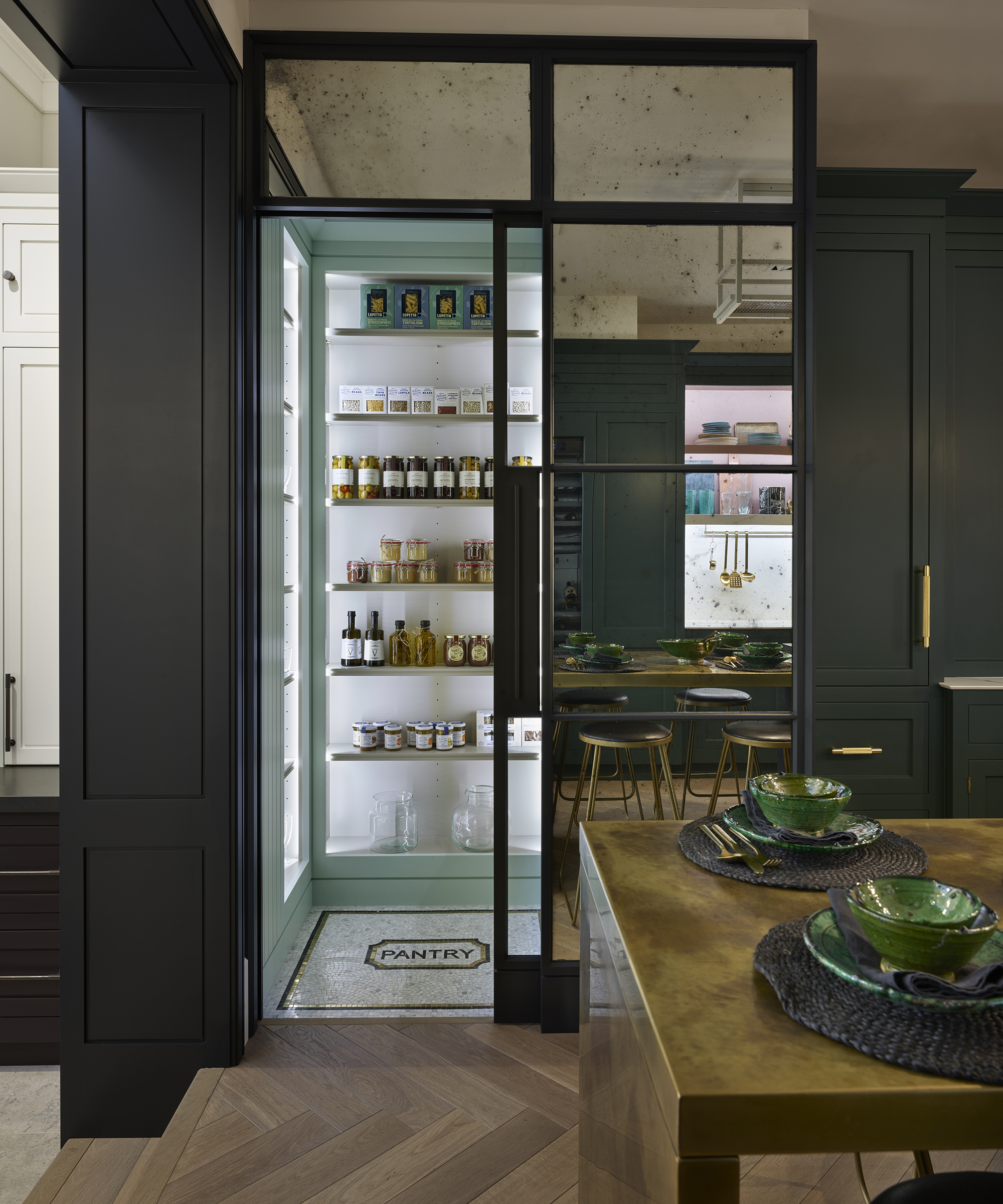
Carefully considered design details can transform a simple pantry idea into something truly extraordinary, as Hetherington Newman shows with this delightful jewel-box of a butler's pantry.
'We love to look for unusual ideas to push a pantry beyond the ordinary,’ says John Hetherington, chairman at Hetherington Newman. ‘From bespoke mosaic floors and specialist lighting to cast iron shelf brackets and marble slabs for cheese and butter, the creative opportunities are endless.’
17. Ensure your pantry is well-ventilated
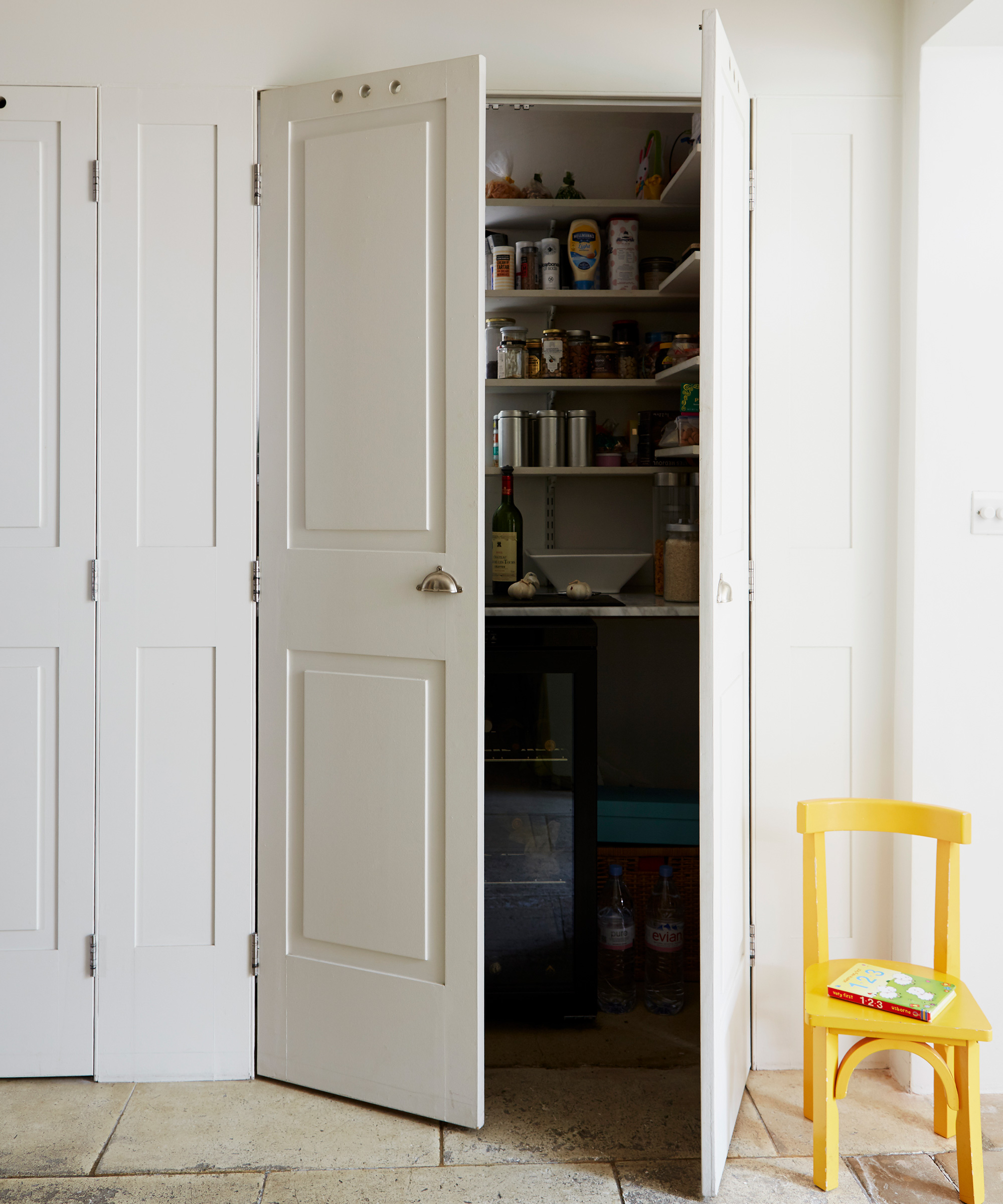
This step feels incredibly practical, but it's really important to consider during the pantry design stages. If you're asking yourself if your pantry needs ventilation, the answer is both yes and no.
Just being in a dry, cool, dark space will usually be enough for jar storage, sealed bags, and hardy fresh fruit and veg such as potatoes, onions, and apples when stored appropriately.
Insulating the space will keep it cooler, but you do need air to circulate. If next to an external wall, consider adding a small mesh-covered window or an airbrick; you could also add a ducted ventilator fan, such as you would have in a bathroom. Have it wired to come on with the light through a single switch.
But avoid installing cooling appliances in a pantry as they emit a lot of heat. In a larger pantry, a small air conditioning unit can be used to circulate air and chill stone countertop surfaces for easy cooling of hot dishes and to create a cold zone for working with pastry.
Pantry FAQs
Do you need a pantry?
You might be thinking, 'how important is a pantry anyway?'
Of course, it's entirely personal choice, but a pantry has a lot to offer a kitchen. It is primarily a space to store goods, keeping things in the 'cool, dark' spot foodstuffs so often require. 'It is one of the quintessential parts of a Classic English Kitchen, it is so practical and so easy to manage,' adds Helen Parker, Creative Director of deVOL. 'Everything is stored together in one place, and everything really easily accessible.'
More than just perishables, pantries can house kitchen appliances and gadgets, freeing up the precious real estate of the countertop. A small pantry built into cabinetry can even work as a breakfast nook, too, perhaps holding the kettle, coffee machine, and toaster.
On a more emotional note, cookbooks are often stored inside pantries, including precious handwritten or annotated family versions, as well as heirlooms such as silver teapots or antique wedding china, which are seen as 'too good' for everyday usage. 'Pantries hark back to the days of less is more, as it treasures the household and family objects as pieces of importance, pieces that need to be held onto and stored together in the pantry,' notes Helen.
What's the difference between a larder and a pantry?
The main difference between a larder and a pantry is that the former stores dry, cupboard goods, while a larder can store colder produce.
The word pantry derives from the French paneterie, or a place to store, bread (pain). So, historically, pantries were the place to store foods such as flour and preserves. Larders, meanwhile, were cold rooms dedicated to the storage of perishable goods, like fresh vegetables, meat and dairy products.
These days, however, we obviously – and thankfully – have fridges, so there is no need for a larder. So today the words pantry and larder have become interchangeable terms for food storage areas close to or within a kitchen.
What is the difference between a pantry and a butler's pantry?
The truth is, there isn't a huge difference between a separate pantry and a butler's pantry – both look very similar. And, like larders, the terms are often used interchangeably.
That said, there is one main difference. While a pantry of any size is meant to be dedicated to food storage, a butler's pantry would contain more practical, prepping elements. Appliances such as coffee makers, food processors, and sinks would be associated with a butler's pantry rather than a pantry.
A successful pantry design is one that expertly blends the functional aspects with the aesthetic ones. Whether you're working with a walk-in pantry or a freestanding cabinet, it should be a space you enjoy using. Pantries are a pain to redecorate, as there's a lot of storage, so avoid choosing colors you should never paint a pantry, and find inspiration from pantry trends for a characterful space.

I’ve worked in the interiors magazine industry for the past five years and joined Homes & Gardens at the beginning of 2024 as the Kitchens & Bathrooms editor. While I love every part of interior design, kitchens and bathrooms are some of the most exciting to design, conceptualize, and write about. There are so many trends, materials, colors, and playful decor elements to explore and experiment with.